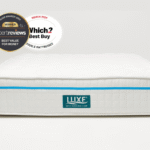As the sun sets and solar panels stop producing power, a household’s energy needs—lighting, refrigeration, and device charging—continue uninterrupted. Solar battery storage bridges this gap by capturing excess solar energy generated during the day and storing it for use after dark. This article explains how solar battery systems work, discusses their benefits and potential drawbacks, and provides key considerations for those planning a new installation or looking to upgrade an existing system. It also offers guidance for homeowners seeking a reliable, 24/7 solar energy solution.
Why Nighttime Energy Use Matters
The Mismatch Between Generation and Demand
Solar energy production peaks during daylight hours, yet household energy demand typically rises in the evening. This timing mismatch contributes to what energy analysts refer to as the “duck curve,” where solar generation drops off just as residential electricity usage spikes. Without battery storage, this evening load must be met by the utility grid or fossil fuel-powered backup systems—compromising the environmental and financial benefits of solar energy.
Incorporating solar battery storage helps bridge this gap by storing excess daytime energy for use at night, ensuring cleaner and more consistent power even when the sun isn’t shining.
Common Homeowner Challenges
- Grid dependence after dark: Even homes with strong solar output often rely on the grid overnight.
- Wasted midday surplus: Excess solar energy produced in the afternoon may be exported or curtailed if not stored.
- Variable energy costs: Without storage, homeowners remain vulnerable to time-of-use pricing and fluctuating utility rates.
These challenges highlight the limitations of standalone solar systems. By capturing and storing unused solar energy, battery storage empowers homeowners to reduce grid reliance, minimise wasted production, and better manage energy costs—ultimately making solar a more efficient and resilient solution.
How Solar Battery Storage Works
- Capturing Surplus Solar Energy
During peak sunlight hours, solar panels often generate more power than the household requires. Instead of sending this excess energy back to the grid, a solar battery system stores it for later use. Smart inverters or controllers manage how energy is allocated between immediate consumption and storage.
- Storage & Efficiency
Most modern residential solar batteries, particularly lithium-ion types, achieve round-trip efficiencies between 85% and 95%. This means that if 10 kWh of energy is stored, roughly 8.5 to 9.5 kWh will be available for later use.
Energy is inevitably lost at several stages—during conversion, wiring, and through thermal losses—making 100% efficiency unattainable.
- Discharging at Night
After sunset, when solar generation ceases, the system automatically begins drawing power from the battery to support the home’s energy needs. This continues until either the stored energy is depleted or solar production resumes the next morning.
- Integrated Software & Control
Many systems include a Battery Management System (BMS) or advanced energy management software that helps optimise performance by:
- Forecasting usage patterns
- Managing discharge timing
- Interfacing with time-of-use utility schedules
- Extending battery life by regulating charge and discharge cycles
Some systems also offer modular expandability, allowing homeowners to increase capacity by adding battery units over time.
How Long Can a Solar Battery Power a Home at Night?
There is no universal answer, as runtime depends on several key variables:
Influencing Factors
- Battery capacity (kWh) – Larger batteries store more energy and can run a home longer.
- Household consumption – Energy-intensive homes (e.g., those with HVAC or electric ovens) will drain batteries faster.
- Depth of Discharge (DoD) – Most systems allow partial discharge to preserve battery lifespan.
- Battery age and temperature – Capacity degrades over time and is affected by extreme heat or cold.
Typical Scenarios
- A 10 kWh battery powering essential devices (lights, refrigerator, electronics) might last 5–8 hours.
- With a larger battery or energy-conscious usage, this can extend to 10–12 hours.
- In very low-consumption situations, some systems may last the entire night and into early morning.
As batteries age—typically degrading to 70–80% of their original capacity—the effective nighttime duration shortens accordingly.
Benefits and Challenges of Nighttime Solar Storage
Tangible Benefits
- Greater energy independence – Reduced reliance on the grid overnight.
- Cost control – Avoidance of high peak-hour utility rates.
- Backup during outages – Batteries can keep essential appliances running.
- Higher self-consumption – Stored solar energy replaces exported energy, increasing in-home usage of solar generation.
Challenges and Considerations
| Challenge | Why It Matters | Mitigation Tips |
|---|---|---|
| Upfront cost | Batteries increase initial system cost | Assess return on investment, rebates, and incentives |
| Efficiency losses | Some energy is lost in the storage cycle | Choose high-efficiency systems and minimise conversions |
| System sizing | Over- or under-sizing affects performance | Conduct accurate load assessments with expert guidance |
| Battery degradation | Capacity decreases over time | Plan for future upgrades or modular expansion |
| Climate sensitivity | Extreme temperatures affect performance | Use climate-controlled or shaded installations |
One notable insight: some studies have found that solar battery systems can slightly increase a home’s overall energy use due to conversion losses—ranging from 8–14% annually.
Tips to Maximise Nighttime Solar Use
- Shift appliance use to daylight hours – Running dishwashers or washing machines during the day conserves battery energy for nighttime use.
- Upgrade to energy-efficient appliances – LED lighting and efficient HVAC systems extend battery runtime.
- Monitor usage – Energy dashboards help identify waste and optimise settings.
- Plan for scalability – Modular systems allow capacity upgrades as needs change.
- Leverage hybrid-grid systems – Remaining grid-connected offers backup reliability while prioritising solar energy.
When Is Solar Battery Storage Worth It?
Battery storage becomes particularly attractive under the following conditions:
- Exposure to high peak or time-of-use rates
- Frequent grid outages or unstable electricity supply
- A desire for greater energy resilience and autonomy
- Homes that produce excess solar energy that would otherwise go unused or be sold back at low export rates
As battery costs decline and incentives expand in many regions, 24/7 solar-powered homes are becoming a realistic and cost-effective option.
EcoFlow offers custom solar and storage solutions tailored to each home’s unique energy profile, climate conditions, and financial goals. These systems empower homeowners to store their own solar power and use it when it matters most—especially during peak hours or at night—enhancing both energy independence and resilience.
Conclusion
Solar battery storage allows homeowners to harness the full potential of their solar panels by turning daytime sunshine into reliable nighttime power. While conceptually simple, success depends on careful system design: matching capacity to consumption, choosing efficient components, and accounting for performance trade-offs over time.
For those seeking true energy independence, the starting point is understanding nighttime energy needs and evaluating battery options accordingly. From there, it’s possible to design a system that bridges the day-night energy gap with confidence.


